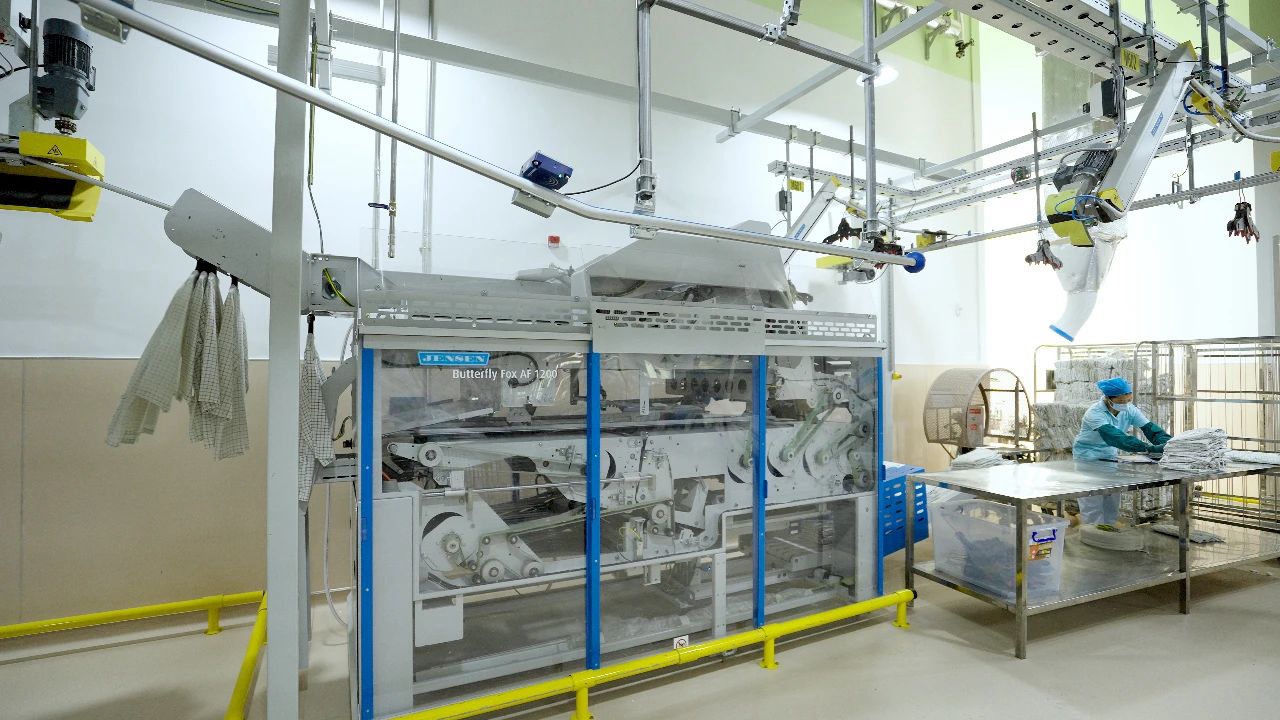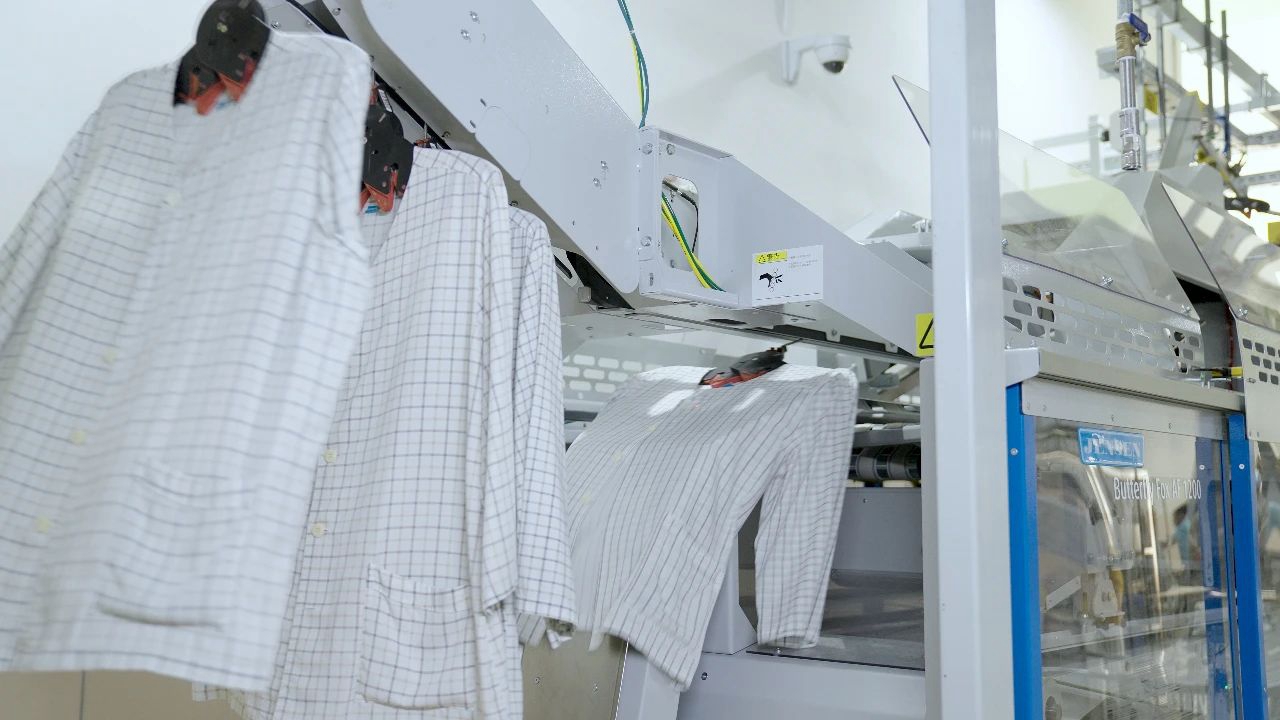This robot can fold laundry
Writer: Li Jing | Editor: Lin Qiuying | From: Shenzhen Daily | Updated: 2025-04-08
A video of a robot folding clothes in Shenzhen has recently gone viral. While folding clothes may seem like a simple task, it represents a significant leap for robots to take over repetitive and tedious work from humans.
Deployed by the medical textile washing center of the Shenzhen Medical and Health Professional Service Center on Longyuan Road in Xili, Nanshan District, the robot can fold and neatly stack 1,200 hospital white coats per hour.
According to the center, the robot, which has been in operation for a year, processes over 60% of the city's medical textiles daily, ranging from small items like operating table pads and newborn swaddling clothes to larger ones like bed sheets and quilts. The center's daily washing and disinfection capacity reaches 60 tons.
In the center, once a soiled medical textile is washed and dried, it undergoes flattening and ironing to ensure there is not a single wrinkle before it is transported to the folding area. In traditional factories, the fabric folding area is the most labor-intensive zone.
“A skilled worker, operating according to standard procedures, can fold 200 pieces of fabric per hour,” said Han Yanhong, director of the washing center. “The robot, however, can fold 1,200 pieces in an hour, averaging one piece every three seconds.”
 Capable of folding and stacking up to 1,200 hospital white coats per hour, the robot streamlines garment handling at the facility. Photos from WeChat account"深卫在线"
Capable of folding and stacking up to 1,200 hospital white coats per hour, the robot streamlines garment handling at the facility. Photos from WeChat account"深卫在线"
The robot has two long “arms,” which are actually conveyor belts. Clothes hanging on hangers are horizontally fed into the machine through these “arms.” The machine continuously blows air and, with the help of auxiliary plates, achieves continuous sleeve folding. Moreover, the robot can remove the hanger before making the first horizontal fold.
The cleaned clothes will be inspected by staffers for any damage, and any missing buttons will be carefully sewn on by tailors. Then, the clothes will undergo tests for cleanliness, PH value, and bacterial colony count before being transported back to medical institutions by special vehicles to be put back into use.

An automated folding machine loads garments at the Shenzhen Medical and Health Professional Service Center in Xili, Nanshan District.
According to technical staff, the robot is equipped with a variety of complex sensors that can scan the fabric of the clothes to obtain corresponding images. The system software then performs color block analysis and positioning within these images. The analysis results can determine a large amount of information about the clothes, such as the material and shape. Based on this information, the robotic arm will fold the clothes in different ways.
Meanwhile, the center has embedded chips in their “white coats,” making them fully traceable. This minimizes the likelihood of disputes over lost clothes and facilitates better cost control.